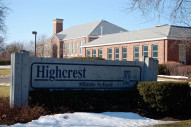28,000
Population
Wilmette is 14 miles north of Chicago's downtown loop.
Population
Median Home Value
Median Household Income
Wilmette is the site of the Baha’i House of Worship, a landmark recognized as one of the Seven Wonders of Illinois, and is the only location in North America. Transportation is convenient featuring a Metra Station in downtown Wilmette and the last stop of the CTA Purple line (the El) is in eastern Wilmette at Linden Square. Metra trains travel from the Loop to Wilmette in only 30 minutes.
The Village of Wilmette is named after a French Canadian fur trader, Antoine Quilmette. He settled in Chicago on the north bank of the Chicago River in 1790 some twenty years later than the first French Canadian fur trader, Jean Baptiste Point du Sable. in 1826 Quilmette and his part-Potawatomi Indian wife moved 14 miles further north on the shores of Lake Michigan, what would eventually become present-day Wilmette. Quilmette helped convince the Potowatami Indians to sign the 1829 Treaty of Prairie du Chien, which gave the federal government title of the land. In exchange, the government deeded 1,280 acres, which encompasses present-day Wilmette and part of Evanston to Mrs. Quilmette. The Quilmette family sold all their land to farmers and developers by 1848.
Wilmette's rapid growth was a result of the Chicago, North Shore & Milwaukee Railroad who extended their tracts through Wilmette to Waukegan in 1854. However, the residents had to wait until 1869 until they had pooled enough money to build a train station. Wilmette incorporated in 1872 and had 419 residents. By 1900 the population had reached 2300.
Meanwhile back in Chicago, 8500 men were digging the 28-mile Sanitary and Ship canal in an effort to reverse the flow of the Chicago River. In 1900 the last chunks of frozen dirt separating the new canal and the Chicago River were removed by cranes allowing the Chicago River to flow into the new deeper channel. The flow of the Chicago River was reversed and the sewage-filled water would no longer flow into Lake Michigan. This huge engineering feat has been called the 'Civil Engineering Monument of the Millennium' by the American Society of Civil Engineers. The North Shore Channel, which terminates in Wilmette was a crucial part of this huge sanitary project. In 1907, the construction to widen the North Shore Channel began. It would create 22 acres of the landfill next to the mouth of the canal in Wilmette. Illinois law stipulated that an organized Park District could take possession of any man-made land as parkland. Wilmette hurriedly petitioned for a vote to form a Park District. In 1908, the Wilmette Park District Board of Commissioners was appointed. In 1911, state legislation granted ownership of the landfill to Wilmette. The Park District then gained ownership of the riparian property between Lake Avenue and Forest Avenue. This land would become present-day Gillson Park. The North Shore Channel project when it was completed in 1909 would result in the creation of Wilmette Harbor.
In 1912 the Chicago Transit Authority (the Northwestern Elevated Railroad) extended its service into Wilmette and serves as the line’s terminus.
In 1942 the village claimed an unincorporated strip of land located on the northern border of the town called “No Man’s Land”. The area would later become the site of Plaza del Lago that opened in 1968.
Serving more than 3,500 students in grades K-8, Wilmette Public School District 39 includes a significant portion of Wilmette and a small portion of adjacent Glenview.
Children in grades K-4 attend one of four neighborhood elementary schools: Central School, Harper School, McKenzie School, or Romona School.
Students in grades 5 and 6 attend Highcrest Middle School. Students in grades 7 and 8 attend Wilmette Junior High School. Average class size ranges from 22 to 24 students, with the highest levels at the older grades.
Graduates of Wilmette Public Schools District 39 attend the highly acclaimed New Trier High School. Loyola Academy is a private Jesuit high school, educating students in grades 9-12.



